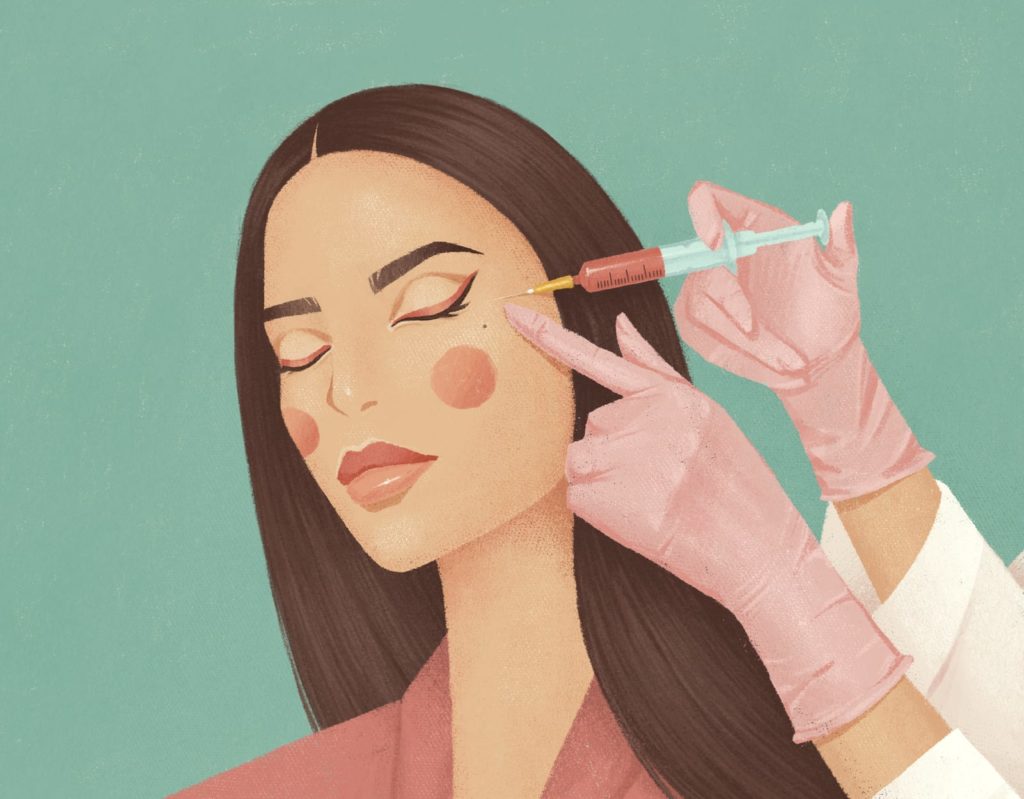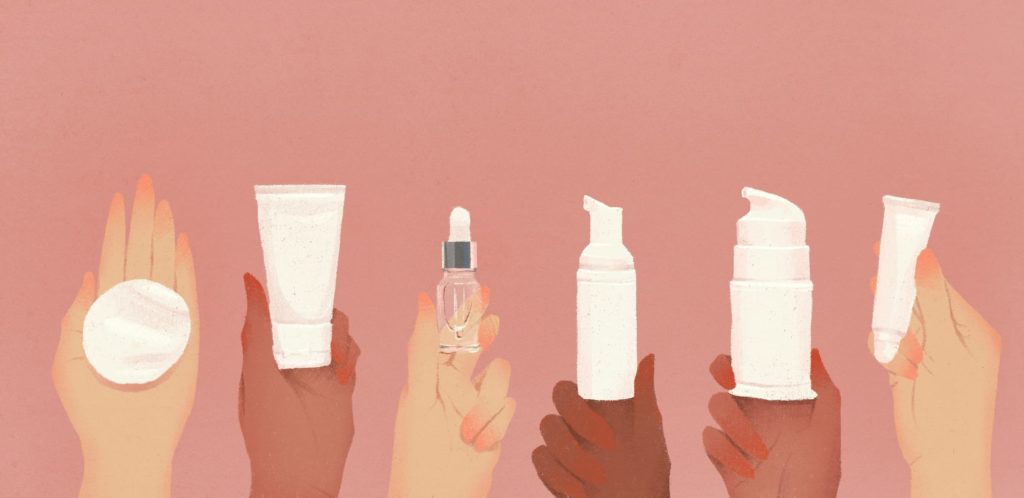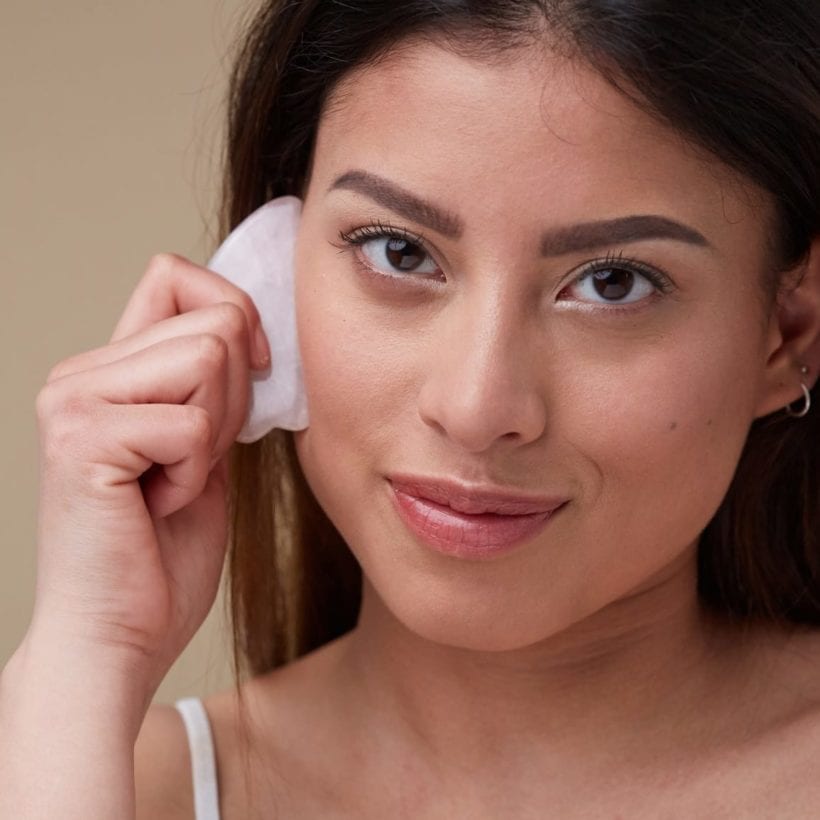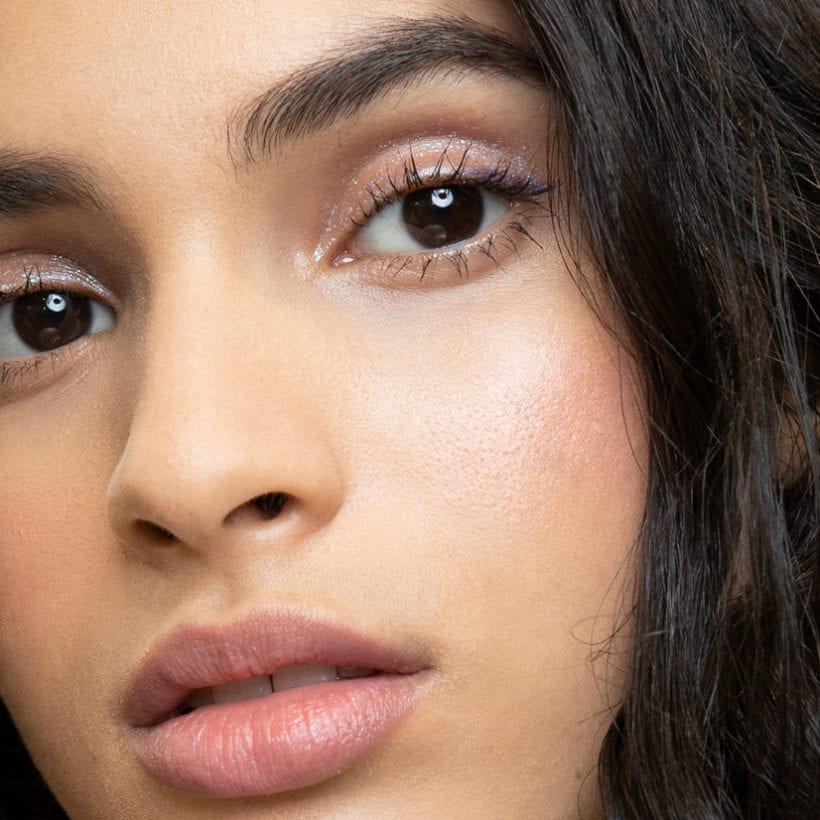It’s been the most nerve-wracking year ever — as evidenced by our stressed-out skin. We could all use a skincare refresh in 2021, don’t you think? Luckily, the beauty industry isn’t lacking in newness and innovation. The skincare industry itself is estimated to be worth $183.03 billion by 2025, according to a new report by Grand View Research, Inc.
If you’re looking to complement your daily at-home routine, there are in-office options to help speed up your desired results. For smooth, younger-looking skin, there are “newer and better injectables, such as HarmonyCa, RHA2, RHA3 and RHA4, that have come to market over the last decade as well, putting these tools in the hands of dermatologists who can reverse the clock in a most natural way,” says Blair Murphy-Rose, M.D., a dermatologist at Medical Dermatology & Cosmetic Surgery in Manhattan. “Significant advances have developed in the ability to non-invasively tighten skin, stimulate collagen production and reduce body fat,” she says.

If you have sensitive skin, you’re equally rejoicing: “Products are more effective, less irritating, and are giving consumers better outcomes,” he says. “Even ingredients, like retinol and hyaluronic acid, that have been used for decades are being reformulated and better stabilized with new actives being incorporated into commonly used products,” says Joshua Zeichner, M.D., director of cosmetic and clinical research in dermatology at Mount Sinai Medical Center.
But what dictates what becomes a trend and what never sees the light of day? Well, it’s us. Society dictates much of what skincare developments and inventions become successful. In the last few years, we’ve seen an increase in the creation of organically sourced ingredients, environmentally-friendly processing and packaging and transparent ingredient lists, notes Brendan Camp, M.D., a dermatologist at Medical Dermatology & Cosmetic Surgery in Manhattan. “As a reflection of changes in society at large, the skincare industry has also become more focused on inclusivity, with skincare lines including models with skin conditions like vitiligo, different body shapes and of varying ages.”
Wondering what’s in store for medical aesthetic trends in 2021? We reached out to some of the most well-respected dermatologists in the field to find out.
Blue Light Protection
Great for: Hyperpigmentation
As the work-from-home movement continues well past the hopeful end of this pandemic, more and more people are glued to their computer screens. This is causing an increased concern over blue light, which may have a negative effect on our eyes as well as our skin, contributing to signs of aging such as hyperpigmentation, fine lines and wrinkles, notes Garshick. While more research is needed, one small study published in the journal Oxidative Medicine and Cellular Longevity found a link between blue light exposure and an increase in free radical production.
“Blue light may also impact the skin by leading to darker and more persistent hyperpigmentation, especially in those with darker skin types, as was shown in another small study,” notes Marisa Garshick, M.D., a dermatologist at Medical Dermatology & Cosmetic Surgery in Manhattan. As such, more consideration will be given to products that also offer blue light protection as we continue to learn more about visible light and the impact on skin aging.
Facial Optimization
Great for: Smoothing skin
People might be getting together in-person less, but Zoom calls are still in high demand for both work and personal life. As a result, Papri Sarkar, M.D., a dermatologist in Boston, Massachusetts, is seeing far more patients place minor facial optimization requests. “People as young as 30 want to optimize their features for their face without looking dramatically different,” she says. “This can be accomplished by putting very small amounts of Botox and filler throughout their face so that they don’t look any different — just more rested.” It’s merely a visual effect and one that’s catching the wind. It’s worth noting, however, that the upkeep of this kind of work is not minimal. Botox and filler must be repeated every three to four months or else the results wear off completely.

Also, in an attempt to achieve facial optimization, there’s been an increase in the use of new injectables, including Teosyal RHA 2, 3, and 4, which are hyaluronic acid fillers that have just come to the market. “The three products differ based on the density of cross-linking, with the more dense products designed to be injected deeper and the less dense products designed to be used more superficially in the face,” explains Zeichner. “They offer long-lasting results and there is some data to suggest that they may cause less swelling after injection than some other products on the market.”
The Salt Facial
Great for: Glowy skin
Just as it sounds, this new facial technology leverages the exfoliating and healing properties of salt. “The machine exfoliates the top layer of the skin (stratum corneum) and then ultrasound energy is used to stimulate vital nutrients back into the skin and create channels for the skin to accept hydration,” explains Deanne Mraz Robinson, M.D., a dermatologist at Modern Derm CT and Assistant Clinical Professor of Dermatology at Yale New Haven Hospital. “The final step is LED light — blue light helps with inflammation and kills bacteria, while red light promotes collagen production and aids in healing.” The result? Dewy, naturally glowing skin that’s less inflamed and acne-prone.
CBG
Great for: Anti-pollution
Climate change impacts our globe and our day-to-day life — including our skin. “People are faced with protecting their skin not just from the sun, but also from these increased environmental toxins,” notes Robinson. Antioxidants are taking center stage thanks to their ability to defend against free radical damage and improve the effectiveness of SPF.” Robinson anticipates seeing a growing number of antioxidant serums and ampoules as well as antioxidants within other formulations such as makeup and SPF.

One antioxidant that’s gaining attention is CBG (AKA cannabigerol), which is a derivative of the cannabis plant. “Like CBD, it is non-psychoactive, and boasts many benefits including anti-bacterial, anti-microbial, and anti-inflammatory,” explains Robinson. “When it comes to topical use in skincare it seems CBG may support the skin’s ability to self-regulate moisture levels.” Because both CBD and CBG are not regulated by the FDA and the research behind them is relatively new, she recommends reaching out to your dermatologist before using any product containing them.
Radiofrequency Microneedling
Great for: Smoothing skin
The process involves pricking ultrafine needles into the skin just a few millimeters deep to create tiny areas of trauma while radiofrequency heat energy is delivered to the skin, explains Murphy-Rose. “As the skin heals itself, a surge in collagen production takes place that helps to remodel the skin and restore youth, tightening skin and reducing fine lines.” While there is no shortage of cosmetic and skincare gimmicks out there, this is one treatment that Murphy-Rose says truly yields results and with fairly minimal downtime to boot.
Platelet-Rich Fibrin Matrix
Great for: Hair growth and skin cell turnover
This type of therapy is used to treat a myriad of patient concerns, from stimulating hair growth to boosting skin cell turnover. During the treatment, your dermatologist will draw blood (usually from your arm) and then place that blood in a sterile tube that’s then spun down in a centrifuge to separate the different components of the blood. This separates the red and white blood cells from the platelets and plasma, which leaves a clear fluid that is then injected into the scalp, explains Zeichner. It can take up to three months to start seeing results and maintenance is required every six to 12 months.
Eye Botox
Great for: Eye wrinkles

In a pandemic world where most of us are only seen while wearing a mask, there’s been increased attention to the eyes on the esthetic level. Where lip injections and rhinoplasties once reigned supreme, dermatologists believe that the next-most requested area that patients are going to call attention to is their eyes, as well as their forehead. Botulinum toxin, AKA botox, can quickly and non-invasively make a huge improvement in fine lines around the eye area, like erasing the “11’s” and “crow’s feet,” notes Murphy-Rose. “With results lasting approximately four to six months, and typically highly satisfied first-time patients returning for subsequent treatments, I predict that 2021 will see increased numbers of consumers.”
Microblading and Brow Lamination
Great for: Brow definition

Eyebrows are also taking center stage and not just regular brow shaping, but also techniques like microblading and brow lamination. “Microblading is a semi-permanent tattoo that enhances your eyebrows and gives an illusion of tiny hair-like lines to make them appear fuller and more naturally filled in,” explains Tammy Fisher, master brow artist and founder of Browtiste. “Brow lamination is a non-invasive technique that helps enhance your brow shape, smooths hairs and also gives a nice lift that then holds the brow hairs in place.” The process typically costs between $80-$150 depending on who you see and lasts about 8 weeks.
Qwo
Great for: Cellulite
The first half of 2021 looks promising for the launch of a new cellulite-smoothing injectable called Qwo, a shorter name for collagenase clostridium histolyticum-aaes. As the first and only FDA-approved injection to treat moderate to severe cellulite of the buttocks in adults, Qwo has a lot of potentials, notes Garshick. “While there are creams and other devices that have been tried to smooth out cellulite, this injection is thought to help release the fibrous bands which lead to the dimpling by targeting collagen types 1 and 3,” she says. “It generally requires three sessions spaced about 21 days apart with each session taking about 30 minutes and swelling and bruising are common side effects.”
Non-invasive Body Contouring
Great for: Body toning

New body contouring procedures that require little-to-no downtimes, such as BodyTite™, CoolSculpting® and EmSculpt have been increasing in popularity over the last decade, and Murphy-Rose doesn’t think they’re going anywhere any time soon. “Procedures like Futura Fit combine ultrasound and electrical current to stimulate muscles and reduce body fat without surgery, without breaking any skin, and with no downtime,” she says. “EmSculpt uses high-intensity focused electromagnetic energy alone to trigger powerful contractions that build muscle tone and Vanquish utilizes radiofrequency energy to induce fat loss without even making contact with the body.” As awareness of these non-invasive body contouring procedures and their impressive results increases, she predicts that patient interest in them will follow suit.








